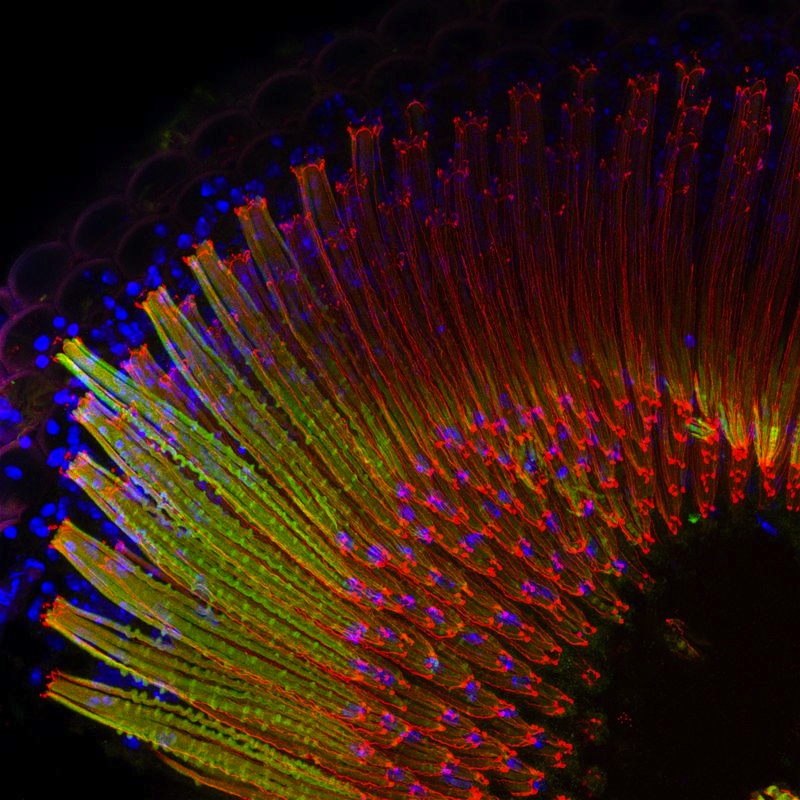
The spiny globs in this image are part of an eye from a fruit fly (Drosophila melanogaster). Karin Panser from the Research Institute of Molecular Pathology in Vienna received the first prize in the international Huygens Image Contest 2013 for the microphotograph.
The image reveals the imagine units called ommatidia arranged in the compound eye of the fruit fly. Compound eyes contains hundreds to thousands of ommatidia, each equipped with a tiny lens and crystalline cone that transports the light to light-sensitive cells. Compared with simple eyes, compound eyes possess a wide-angle view and are able to detect fast-eye movement.
In this image, Panser stained the molecules, with nuclei shown in blue, molecules called cadherins in red, and chaoptin proteins in the photoreceptors in green.
Follow LiveScience @livescience, Facebook & Google+.
Get the world’s most fascinating discoveries delivered straight to your inbox.



